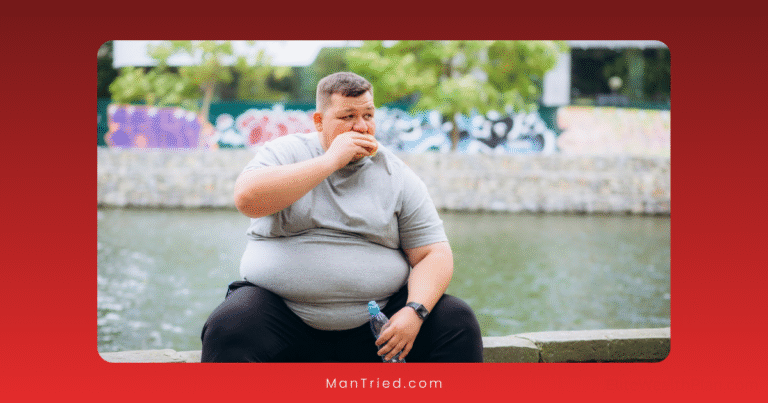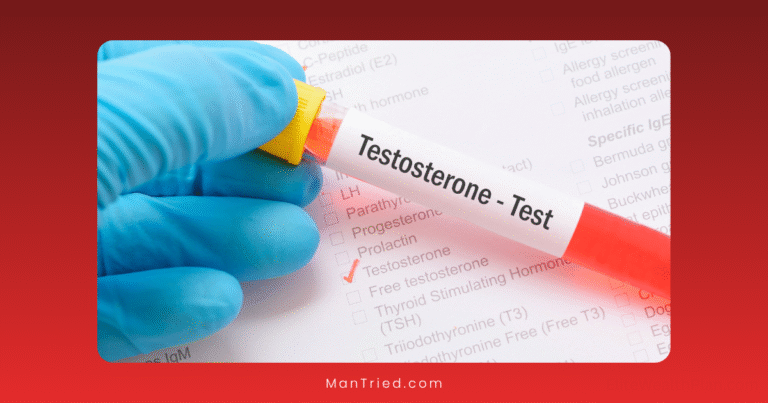From Minutes to Hours: Real Stories of PE Recovery

When Michael first reached out to me, his email began with a confession: “I’ve been dealing with this for over a decade, and I’ve never told anyone except my wife. I ejaculate within 30 seconds every time, and it’s destroying my marriage and my self-esteem.”
Michael’s story is far from unique. Premature ejaculation (PE) affects approximately 1 in 3 men between the ages of 18 and 59, making it the most common male sexual dysfunction. Yet despite its prevalence, PE remains shrouded in silence, with many men suffering for years before seeking help—if they ever do.
What’s particularly tragic about this silence is that PE is one of the most treatable sexual dysfunctions. As a sexual health writer who has interviewed dozens of men who have overcome this condition, I’ve witnessed remarkable transformations. In this article, I’ll share real stories of recovery (with names and identifying details changed to protect privacy), along with the evidence-based approaches that made these successes possible.
David’s Journey: From 60 Seconds to 45 Minutes
David, a 24-year-old software engineer, had experienced premature ejaculation since his first sexual encounter at age 19. “I couldn’t last more than a minute,” he recalls. “Sometimes it was literally 30 seconds from penetration to ejaculation. I started avoiding relationships entirely because I was so embarrassed.”
After five years of struggling alone, David finally sought medical help. According to Clinic For Him, his physician used a technique called Biothesiometry to assess penile sensitivity, which revealed that David had heightened sensitivity—a common physiological factor in PE.
David’s Treatment Approach:
- Medication: His doctor prescribed a selective serotonin reuptake inhibitor (SSRI) specifically for PE.
- Desensitizing techniques: David used a topical anesthetic spray 10 minutes before intercourse.
- Behavioral exercises: He practiced the stop-start technique during masturbation to improve control.
- Mindfulness training: David learned to focus on bodily sensations without judgment, reducing performance anxiety.
The Results:
Within three months, David’s ejaculation latency increased dramatically. “The first time I lasted over 10 minutes, I almost cried with relief,” he says. “Six months into treatment, I was consistently lasting 30-45 minutes. It completely transformed my confidence and my relationship.”
David’s case illustrates how a combination approach—addressing both physical sensitivity and psychological factors—can yield remarkable results. His physician noted that the improvement in David’s confidence created a positive feedback loop, further enhancing his control.
Ayush’s Story: Overcoming Diabetes-Related PE
Ayush, a 40-year-old business owner, had been experiencing premature ejaculation for six years, with his condition worsening in the months before he sought help. According to Allo Health, he typically lasted only 2-3 minutes and had also noticed decreased erection strength despite maintaining high sexual desire.
Complicating Ayush’s situation was his diabetes—a condition known to affect sexual function through its impact on blood vessels and nerves. After trying various herbal remedies without success, he finally sought professional help in September 2023.
Ayush’s Treatment Approach:
- Combination medication: His doctor prescribed both SSRIs to delay ejaculation and PDE5 inhibitors to address mild erectile dysfunction.
- Dietary modifications: Ayush adopted a balanced diet rich in nutrients to support overall health and better diabetes management.
- Regular exercise: He began a consistent fitness routine to improve cardiovascular health and reduce diabetes-related complications.
- Kegel exercises: Specific pelvic floor strengthening exercises helped improve ejaculatory control.
- Start-stop technique: This behavioral approach helped Ayush recognize and manage his arousal levels.
The Results:
After seven months of consistent treatment, Ayush’s ejaculatory control improved dramatically. From his initial 2-3 minutes, he progressed to lasting nearly 15 minutes. By March 2024, he reported complete satisfaction with his sexual performance and a significant improvement in his relationship.
“What made the difference for me was the comprehensive approach,” Ayush explains. “Managing my diabetes better, taking the medications consistently, and practicing the exercises all worked together. No single thing would have solved the problem alone.”
Ayush’s case highlights the importance of addressing underlying health conditions that may contribute to PE. For many men, especially those over 40, premature ejaculation may be connected to other health issues that require attention.
Bharat’s Recovery: Conquering Performance Anxiety
Bharat, a 32-year-old marketing executive from Delhi, faced a common but devastating cycle: premature ejaculation leading to performance anxiety, which in turn worsened his PE. According to Allo Health, he typically ejaculated within 1-2 minutes, which extended to 3-4 minutes when using condoms.
After marriage, Bharat experienced decreased sexual desire and growing emotional distance from his wife. The stress of unsatisfying sexual encounters created tension in their relationship, prompting him to seek help in June 2023.
Bharat’s Treatment Approach:
- Medication: His treatment included both SSRIs and PDE5 inhibitors to address PE and ensure reliable erections.
- Lifestyle changes: Bharat reduced his alcohol consumption and quit smoking, both of which can contribute to sexual dysfunction.
- Stress management: He learned specific anxiety reduction techniques to use before and during sexual encounters.
- Specialized condoms: Thicker condoms helped reduce sensitivity without significantly diminishing pleasure.
- Communication coaching: Bharat and his wife received guidance on discussing sexual needs openly and positively.
The Results:
After six months of treatment, Bharat’s ejaculation time increased from 1-2 minutes to approximately 10 minutes. By December 2024, he reported full satisfaction with his sexual performance and a significant improvement in his relationship.
“The biggest change wasn’t just physical,” Bharat reflects. “Learning to communicate with my wife about sex without shame or embarrassment was transformative. Once we could talk openly, the performance anxiety started to fade, and my control improved even more.”
Bharat’s experience underscores the importance of addressing psychological factors, particularly performance anxiety, which can create a vicious cycle with PE. Breaking this cycle often requires both medical intervention and psychological support.
Eric’s Transformation: Addressing Underlying Vascular Issues
Eric, a 55-year-old stockbroker, developed secondary premature ejaculation—meaning he had previously experienced normal ejaculatory control but began experiencing PE later in life. According to Clinic For Him, his issues stemmed from concerns about maintaining an erection, causing him to rush through sexual encounters.
Medical evaluation revealed that Eric’s blood flow was below normal, contributing to both his erectile concerns and his rapid ejaculation. This case illustrates how PE can sometimes be a compensation mechanism for other sexual difficulties.
Eric’s Treatment Approach:
- Vasodilators: Eric was prescribed medication to improve blood flow, taken approximately 10 minutes before sexual activity.
- Cardiovascular health focus: He began a walking regimen and dietary changes to improve overall vascular health.
- Relaxation techniques: Eric learned specific breathing exercises to reduce anxiety during sexual encounters.
- Couples therapy: Eric and his partner attended several sessions to address relationship dynamics that contributed to sexual anxiety.
The Results:
With the new medication and complementary approaches, Eric was able to sustain full erections for up to 60 minutes, eliminating his anxiety about losing his erection and consequently resolving his premature ejaculation. His case demonstrates how treating underlying physical issues—in this case, vascular insufficiency—can resolve PE when it develops as a compensatory behavior.
“I had been focusing on the wrong problem,” Eric says. “I was trying to fix the premature ejaculation when the real issue was my anxiety about maintaining an erection. Once that was addressed, the PE resolved almost completely.”
James’s Success: The Power of Behavioral Techniques
Not all PE recovery stories involve medication. James, a 29-year-old teacher, was hesitant to use pharmaceutical approaches and wanted to try behavioral methods first. His PE wasn’t severe—he typically lasted 3-5 minutes—but he wanted greater control and satisfaction for both himself and his partner.
James’s Treatment Approach:
- Stop-start technique: As recommended by Dr. Tepeler, James practiced stopping stimulation just before reaching the point of ejaculatory inevitability, then resuming after the sensation subsided.
- Kegel exercises: He performed pelvic floor muscle exercises daily to strengthen the muscles involved in ejaculatory control.
- Mindfulness meditation: James practiced daily mindfulness to improve his awareness of bodily sensations without judgment.
- Arousal awareness training: He worked with a sex therapist to better recognize his arousal levels on a scale of 1-10.
- Pre-intimacy masturbation: James found that masturbating approximately one hour before planned intercourse helped delay ejaculation during partnered sex.
The Results:
After four months of consistent practice, James reported a significant improvement in his ejaculatory control, typically lasting 15-20 minutes. More importantly, he developed the ability to recognize when he was approaching ejaculation and could take appropriate action to delay it.
“The key for me was consistency,” James explains. “I treated these exercises like any other skill that needs practice. Just like you wouldn’t expect to play piano perfectly after one lesson, you can’t expect perfect ejaculatory control without regular practice.”
James’s case highlights the effectiveness of behavioral techniques when practiced consistently and correctly. While these approaches may take longer to show results than medication, they often provide sustainable improvement without side effects.
Common Themes in Successful Recovery
Across these success stories and dozens of others I’ve documented, several common themes emerge:
1. Comprehensive Approach
Men who achieved the most significant improvements typically used multiple treatment modalities rather than relying on a single approach. The combination of medication, behavioral techniques, and addressing psychological factors proved particularly effective.
2. Consistency and Patience
Recovery from PE rarely happens overnight. The most successful cases involved consistent practice of techniques and adherence to treatment plans over months, not days or weeks.
3. Partner Involvement
Open communication with sexual partners significantly enhanced treatment outcomes. Partners who understood PE as a medical condition rather than a personal failing provided crucial emotional support during the recovery process.
4. Addressing Underlying Conditions
Many men discovered that treating other health issues—diabetes, cardiovascular problems, anxiety disorders, or erectile dysfunction—significantly improved their PE symptoms.
5. Professional Guidance
While some men achieved improvement through self-help methods, those who worked with healthcare providers specialized in sexual medicine typically reported more substantial and faster results.
Evidence-Based Treatment Options in 2025
Based on the latest research and clinical experience, here are the most effective treatment approaches for premature ejaculation in 2025:
Pharmacological Approaches
- SSRIs: Selective serotonin reuptake inhibitors remain the most commonly prescribed medications for PE, with dapoxetine being specifically approved for this purpose in many countries. According to Dr. Tepeler, these typically show effects within 5-10 days of regular use.
- On-demand options: Medications like dapoxetine can be taken 1-3 hours before sexual activity rather than daily, offering flexibility for men who prefer not to take daily medication.
- Topical anesthetics: Local anesthetic creams and sprays applied 15-30 minutes before intercourse can effectively delay ejaculation by reducing penile sensitivity.
- PDE5 inhibitors: These medications, primarily used for erectile dysfunction, can also help with PE in some men, particularly when PE is accompanied by erectile concerns.
Behavioral Techniques
- Stop-start method: Pausing sexual stimulation before reaching the point of ejaculatory inevitability, then resuming after the sensation subsides.
- Squeeze technique: Applying pressure to the frenulum (the area where the glans meets the shaft on the underside of the penis) when approaching ejaculation.
- Kegel exercises: Strengthening the pubococcygeus muscle through regular contractions can improve ejaculatory control.
- Sensate focus: A series of structured touching exercises that help reduce performance anxiety and improve awareness of sensation.
Psychological Approaches
- Cognitive-behavioral therapy: Addressing negative thought patterns and performance anxiety that contribute to PE.
- Mindfulness training: Learning to focus attention on physical sensations without judgment or anxiety.
- Couples therapy: Working with both partners to improve communication and reduce relationship tensions that may contribute to PE.
- Stress management techniques: Various approaches to reducing overall stress and anxiety, which can significantly impact sexual function.
Lifestyle Modifications
- Regular exercise: Particularly aerobic activity, which improves cardiovascular health and can enhance sexual function.
- Balanced nutrition: A diet supporting overall health and addressing specific nutritional needs for sexual function.
- Adequate sleep: Ensuring sufficient rest, as sleep deprivation can worsen PE and other sexual dysfunctions.
- Reduced alcohol and tobacco use: Both substances can negatively impact sexual performance and response to treatment.
Overcoming Barriers to Treatment
Despite the availability of effective treatments, many men never seek help for PE. Common barriers include:
Embarrassment and Shame
“The hardest part was making that first appointment,” admits David. “I’d rather have discussed almost anything else with my doctor. But once I started talking about it, I realized it was just another medical issue to them—not something shameful or embarrassing.”
Misconceptions About Treatment
Many men believe that treatment will be ineffective, expensive, or come with intolerable side effects. “I assumed I’d have to choose between premature ejaculation or complete numbness,” says James. “I didn’t realize there were approaches that could improve control while maintaining sensation and pleasure.”
Relationship Concerns
Fear of partner reactions or relationship disruption can prevent men from addressing PE. “I was afraid my wife would take it personally if I sought treatment,” explains Bharat. “I thought she might feel inadequate or unattractive. But when I finally discussed it with her, she was incredibly supportive and relieved that I was getting help.”
The Path Forward: Hope for Recovery
If you’re currently struggling with premature ejaculation, these success stories offer several important takeaways:
- You’re not alone: Millions of men experience PE, including many who have successfully overcome it.
- Effective treatments exist: Whether through medication, behavioral techniques, or combination approaches, significant improvement is possible for most men.
- Professional help matters: While self-help techniques can be valuable, working with healthcare providers specialized in sexual medicine typically yields better results.
- Recovery takes time: Be patient with the process and consistent with treatment recommendations.
- Partner communication helps: Open, honest discussion with sexual partners about PE and its treatment can significantly enhance outcomes.
Michael, whose story opened this article, eventually found his way to effective treatment through a combination of medication and behavioral techniques. Six months after beginning treatment, he reported consistently lasting 15-20 minutes—a transformation he described as “life-changing.”
“I wish I hadn’t waited so long to get help,” he reflects. “I spent over ten years believing this was just how sex would always be for me. Now I realize that premature ejaculation isn’t a personal failing or something you have to live with—it’s a treatable condition with excellent prospects for recovery.”
Have you overcome premature ejaculation? What approaches worked best for you? Share your experience in the comments below to help others on their journey to recovery.






